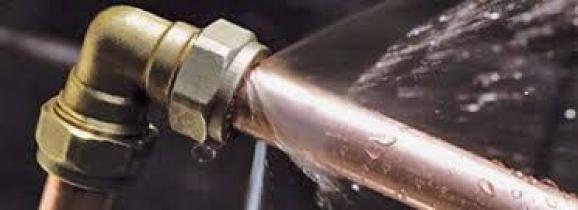The Six Most Common Sources of Water Leaks in Your Home: How to Identify and Address Them
The Six Most Common Sources of Water Leaks in Your Home: How to Identify and Address Them
Blog Article
Just how do you actually feel in relation to Common Water Leaks In House?

Leakages not only create waste of water however can also create unneeded damage to your residence and promote undesirable organic development. By looking and understanding for day-to-day circumstances that cause leakages, you can shield your residence from future leaks and also unneeded damage.
Encroaching roots
Most water leakages start outside your home rather than inside it. If you notice an abrupt decrease in water stress, say in your tap, require time to go out and analyze your yard. You may notice wet spots or sinkholes in your yard, and that could imply that tree origins are invading water lines triggering water to seep out. You can have your plumber check for breach, specifically if you have trees or shrubs near your building.
Corroded water supply
As time goes by, your plumbing system ages as well as deterioration such as rust may start gnawing the pipes. This could be the root cause of discoloration or warping on your pipes. This requires an inspection with your plumber instantly. Take into consideration changing the pipelines since they are at a higher risk of rust than the newer designs if our plumbing system is old.
Defective Pipeline Joints
The factor at which your pipelines attach is often the weakest link in the waterline. Pipe joints can weaken in time, leading to water leaks. The bulk of pipe joints are not easily visible. If you have loud pipelines that make ticking or banging noises, particularly when the warm water is switched on, your pipe joints are probably under a great deal of stress. It is a good idea to have your plumber check your system once a year.
Immediate temperature adjustments.
Extreme temperature level changes in our pipelines can cause them to increase and also get all of a sudden. This development as well as tightening may trigger cracks in the pipelines, especially if the temperature level are below cold.
Poor Water Connectors
At times, a leak can be brought on by loose tubes as well as pipes that supply your appliances. Generally, changing is what triggers the loose water Links. You could find in the case of a washing machine, a tube might spring a leakage because of shaking throughout the spin cycle. In case of a water connections leakage, you might discover water running straight from the supply line or pools around your home appliances.
Clogged Drains
Blocked drains pipes might be frustrating and inconveniencing, however they can occasionally end up causing an overflow causing break pipelines. Keep removing any type of products that may decrease your drains pipes that can obstruct them to avoid such hassles.
All the above are root causes of leaks but not all water leaks result from plumbing leakages; some leakages may originate from roof covering leaks. All leaks must be fixed quickly to avoid water damage.
Leaks not only cause waste of water however can additionally create unneeded damages to your house and advertise undesirable natural development. By looking as well as recognizing for day-to-day scenarios that create leakages, you can protect your home from future leaks and unnecessary damage. Today, we will look at six leak triggers that might be triggering your pipelines to leak.
At times, a leak can be triggered by loose tubes and also pipelines that provide your devices. In situation of a water links leak, you may observe water running straight from the supply line or puddles around your home appliances.
How To Check For Water Leak In Your Home
How To Check for Leaks
The average household's leaks can account for nearly 10,000 gallons of water wasted every year and ten percent of homes have leaks that waste 90 gallons or more per day. Common types of leaks found in the home are worn toilet flappers, dripping faucets, and other leaking valves. These types of leaks are often easy to fix, requiring only a few tools and hardware that can pay for themselves in water savings. Fixing easily corrected household water leaks can save homeowners about 10 percent on their water bills.
To check for leaks in your home, you first need to determine whether you're wasting water and then identify the source of the leak. Here are some tips for finding leaks:
Take a look at your water usage during a colder month, such as January or February. If a family of four exceeds 12,000 gallons per month, there are serious leaks.
Check your water meter before and after a two-hour period when no water is being used. If the meter changes at all, you probably have a leak.
Identify toilet leaks by placing a drop of food coloring in the toilet tank. If any color shows up in the bowl after 10 minutes, you have a leak. (Be sure to flush immediately after the experiment to avoid staining the tank.)
Examine faucet gaskets and pipe fittings for any water on the outside of the pipe to check for surface leaks.
Undetected water leaks can happen without the home or business owner even realizing. If you suspect a water leak, but not able to find the source. It is time to contact a professional water leak detection service, The Leak Doctor.
How To Find a Water Leak In Your Home
https://www.leakdoctor.com/blog/How-To-Check-For-Water-Leak-In-Your-Home_AE197.html

As a reader about Common Water Leaks In House, I was thinking sharing that piece of content was sensible. I beg you take a moment to promote this blog post if you appreciated it. Thank you so much for your time spent reading it.
Recurring Service Plans Report this page